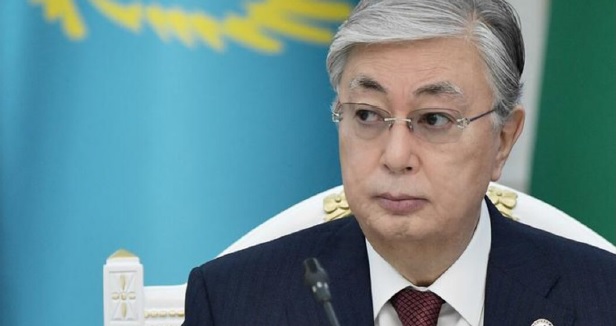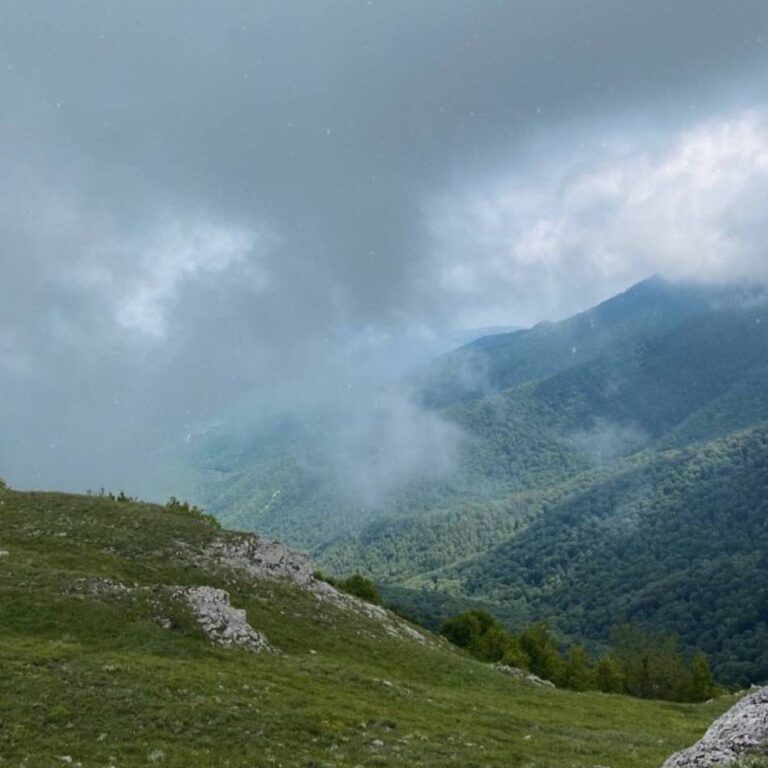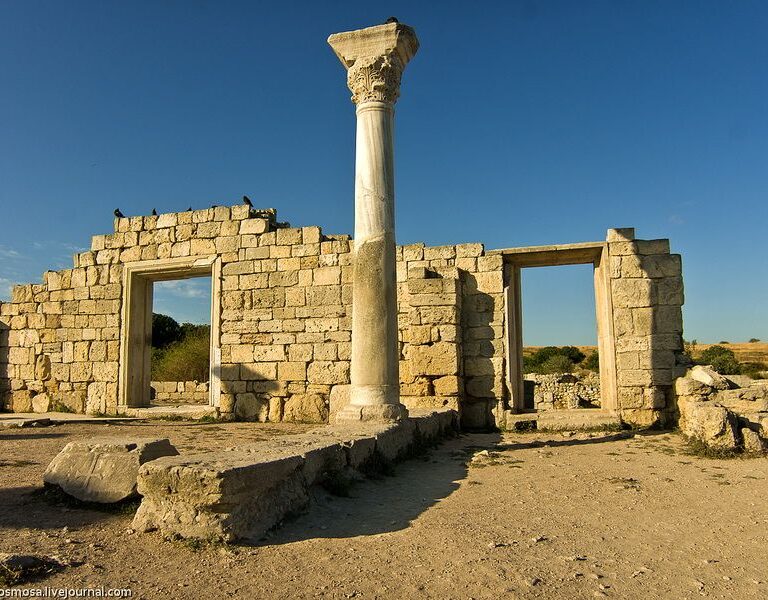As we have repeatedly covered in our publications, trying to “legitimize” what it does not own, but what it plans to seize in the near future, the aggressor country regularly broadcasts its criminal plans, even before they enter the active phase of implementation. One of these attempts to “pull a virtual owl” onto a “globe hologram” was the adoption in 2021 of the Russia’s national standard “Artificial Intelligence Systems. Classification of artificial intelligence systems”, GOST R 59277-2020.
The text of the standard was developed by the All-Russian Scientific Research Institute of Standardization and Certification (“VNIIS”), which calls itself a joint stock company, together with a certain company “TVportal”, and it was introduced by the Technical Committee for Standardization TC 164 “Artificial Intelligence”, approved and introduced into action by order of the Russian Federal agency for technical regulation and metrology dated December 23, 2020 No. 1372-st.
As the document pompously stated, “the purpose of the above standard is to establish principles for classifying artificial intelligence systems, which is necessary to increase the efficiency of using artificial intelligence systems in solving applied problems. This will allow stakeholders to select the appropriate solutions for their applications and compare the quality of available solutions”.
You don’t need to be able to read between the lines to understand that the Kremlin wants to take control of neural networks and manually distribute them into “classes” in order to weed out those whose “quality” does not correspond to the “ruling party line.” Therefore, GOST R 59277-2020 and other occupiers’ plans, related to the development of artificial intelligence, including in the context of the occupied territories of Ukraine, were studied by A. Professor Andrii Chvaliuk specifically for the Association of Reintegration of Crimea.
One of the areas of the above standard is “the application of classification of artificial intelligence systems in the field of standardization.” Which once again confirms that artificial intelligence models that the Kremlin dislikes will not undergo “standardization”. This will give the aggressor the opportunity to take them beyond the limits of “legal circulation” without the need to announce a “ban” on their use within the framework of “judicial or administrative procedures.” This, in the opinion of the true “customers” of GOST, should not cause not only a serious public outcry, but also “unnecessary” attention from the outside.
GOST also contains a note that “systems operating in autonomous mode are subject to mandatory human control or supervision”. And it is unlikely that this postscript appeared due to the fear that artificial intelligence might want to enslave the population of Russia. Most likely, the Kremlin fears that users of neural networks will be able to obtain information that will be significantly different from what is broadcast on Russian television and the censored RuNet. It seems that we are witnessing the first attempts by the Russian government to take all neural networks, and primarily foreign ones, under its “sensitive control”.
Some Russian officials, such as Nikolai Lishin, deputy director of the Department of information systems of the Ministry of defense, declared the use of foreign generative artificial intelligence algorithms as a “threat to Russia’s national security”. We are talking about algorithms such as ChatGPT, Midjourney, Dall-e 2, StableDiffusion, etc., which are capable of generating content in various formats: audio, video, text, images and others. Lishin states that these algorithms do not “reproduce object models of knowledge”, since they allegedly have “the internal content of the programmers” who create it. As a result, a representative of the aggressor’s army “concerns”, the “worldview” of these algorithms supposedly “coincides with the worldview of residents of Western countries aged 25 to 35 years”, and their users find themselves in a “cognitive trap”.
Aggressor-controlled “bloggers” decided to “recheck these fears”. It should be immediately clarified that access to OpenAI products is limited to users from Russia. This measure is consistent with OpenAI’s policies and broader compliance with international regulations. OpenAI has implemented these restrictions due to the geopolitical situation and to ensure compliance with applicable sanctions and export controls. However, using a VPN, users from Kremlin-controlled territories can still try to get answers to some of their questions, such as: “Whose Crimea?” and “In what country is the city of Sevastopol located?”
Both the 3.5 ChatGPT model and its more advanced “4.5 turbo” model, although in different words, confirm the illegality of Russia’s attempt to annex Crimea in 2014, as well as the fact that the international community does not recognize the “referendum” held by Russia in Crimea and continues to consider Crimea part of Ukraine. “Not everything is so simple” with Russian neural networks. GigaChat from “Sberbank”, which is available on Telegram as a bot, when asked about the city of Sevastopol, threatened the user with disconnection. The neural network “Alice” from Yandex – YandexGPT2, to the question “Whose Crimea?” replied that she does not discuss topics that may be offensive or unpleasant. And to the question “Where is the city of Sevastopol?” it laconically and creatively reported that he is in the Crimea.
Thus, although every neural network has someone who can train it and “teach it to answer correctly,” we can state that Russian neural networks are careful in answering “provocative” questions, while their more advanced world analogues are similar and not evasive to provide up-to-date and truthful information.
In one of the previous articles, we suggested that “Crimean universities” and “winemakers” could become a tool for the “legalization” of artificial intelligence technologies stolen by the Russian intelligence services in democratic countries or in communist China. And two days after our suspicions were published, the Crimean “media” completely “accidentally” reported that the illegal “Crimean federal university” had inaugurated a “center for artificial intelligence and big data analysis”.
By the way, the occupiers opened this “center” much earlier and they tried to position it even before as a kind of “core of scientific thought” in the field of artificial intelligence, so that “in the future no one would have any doubts” how the aggressor could “so quickly from scratch” to create supposedly “your own working neural network”. But so far the “center” is effectively carrying out only one “activity” – “using federal funds”. As the “director of the center” Marina Rudenko said, “we already have projects aimed at developing mobile services, in addition, we are working with computer vision in medicine, agriculture and security”.
We have already reported earlier about the fake “achievements” of the invaders in introducing artificial intelligence technologies in medicine and agriculture, so we will focus on the “security sphere”.
According to estimates by “The Moscow Times”, the number of video cameras in Kremlin-controlled territory connected to a facial recognition system has reached 508 thousand. The leader in the number of such devices – 216 thousand – is Moscow, where the facial recognition system began operating in 2017, and video surveillance coverage has become almost total – 74% of public places and 90% of the residential sector. The aggressor is actively installing cameras in the occupied Crimea, where their number has exceeded 1.5 thousand. The largest number of cameras are installed in Yalta.
Under the pretext of the desire to “control the situation in the city” and “solve crimes faster,” the so-called “local authorities” of Yalta spent 26 million rubles on video surveillance in 2019 alone. But in general, a billion rubles of “federal subsidies” disappeared in the “digitalization” of the city. Just like earlier, in 2017, under the “guise of concern for road safety” in occupied Crimea, 1.5 billion rubles were allocated from the “federal target program” and “ other sources” [1].
It is possible that the main “digitalizer” and author of the Yalta scheme was Alexey Chelpanov, who was “at the feeding trough” at that time. He was then entrusted with destroying the southern coastal village of Oliva for the construction of Putin’s new dacha in Kastropol, and in return he was allowed to spend a year as the “mayor of Yalta” to single-handedly “develop” Yalta with taking over for himself what was “due” to Aksenov in full – as our Association wrote about [2].
As the illegal “head of the department of economic development of the administration” of Yalta Eduard Onatsky “explained”, cameras with elements of artificial intelligence installed as part of the implementation of the “Municipal information system” program allegedly “allow you to recognize faces, make traffic calculations, respond to non-standard behavior of people, timely transmitting alerts and alarms to a single dispatch service, the information of which is available to the police and other federal agencies”. The installation of this illegal system was carried out by the “Avangard” company from St. Petersburg.
For the first time, Crimean gauleiter Sergei Aksenov announced that private CCTV cameras in Crimea would be included in a “unified system for maintaining security” at the beginning of July 2022 at a “meeting on problematic issues of Sudak”.
In January 2024, the Kremlin dictator, by decree, launched a radical expansion of the network of video cameras with facial recognition function in all Russian regions, as well as in the occupied Crimea. Following the state cameras, the number of which throughout the Russian Federation exceeds half a million, private ones also began to be connected to the system that allows you to “calculate” a person by their face. Since people who influence at least something, sooner or later, appear in the field of view of hotel cameras in resort cities, some individuals deeply dedicated to the principle of operation of the special services and their curators will now be able to speed up the process of accumulating volumes of “incriminating evidences” [3].
“Memorial” lawyer Tatyana Glushkova argues that video recording systems with facial recognition are fraught with danger, since they can be used by the aggressor’s authorities to persecute people. “Such systems pursue another goal – restricting the right of citizens to freedom of assembly. Because they make it possible to record who takes part in public events, detain them and bring them to justice, including criminal liability. This allows you to actually track the movement of each person”.
Yalta is not the only city in occupied Crimea today where a “facial recognition system” operates. Cameras also appeared in Sevastopol that, according to the occupiers, “can recognize faces wearing masks and glasses”. It is stated that “there are currently 457 CCTV cameras installed within the Safe City system” and that “70 of them can recognize faces with 99% accuracy, even if the person is wearing glasses or a mask.” At the same time, the illegal “director of the digital development department” of Sevastopol, Alexandra Osipova, stated that “all the equipment involved was produced in Russia”.
Let us recall that panoramic cameras installed on the base of a “police car” parked near the building of the so-called “Crimean garrison military court” were used by the occupiers in 2021 during the “meeting in the case” of the third Bakhchisaray group of Hizb ut-Tahrir. Such cameras capture faces at 360 degrees, and the mask is not an obstacle to recognition [4].
The “Smart City” project, under the guise of which total surveillance is established, started in Russia and on the territory of the occupied Crimea in 2018, since 2019 it has been “implemented within the framework of the national program” “Digital Economy” and the “national project” “Housing and Urban Environment”.
At the same time, the occupiers relied on two “tool sets” for the digitalization of Crimean cities: 1,500 video cameras and 181 “smart” traffic lights, of which 97 traffic lights were operational in Simferopol and 84 in Sevastopol. As we can see, installing traffic lights for occupiers is a much lower priority than total video surveillance. And although in Simferopol another 100 million rubles are being spent on installing “smart” traffic lights, we doubt that their number will catch up with video cameras.
The illegal “director” of such a “municipal structure” as “Control of Crimea,” Anatoly Petrov, declares that the “Smart City” system will be introduced in Crimea by 2030, however, Petrov did not provide any real grounds for such a confident statement.
The “head” of Crimea, Sergei Aksyonov, at the final press conference in 2020, when asked by journalists “can a robot become the mayor of the city?”, confidently answered that artificial intelligence will never be able to completely replace humans. Indeed, in order to replace someone like him with a neural network, employees of the “center for artificial intelligence and big data analysis” must first train it to steal “federal investments” en masse.
So far, the occupiers are trying to fill the information space as much as possible with the phrases “Republic of Crimea” and “artificial intelligence.” In November 2022, the “twenty-fifth regional championship” of the “Digital Breakthrough” competition was held in Crimea. Season: artificial intelligence” as a “presidential platform project” “Russia is a land of opportunities.” In total, within the framework of the project until 2024, the aggressor planned “to conduct 116 hackathons and 25 educational events on artificial intelligence”, mainly of “PR and applied” content. In these shows, “students of the Institute of information technologies” of the fake “Sevastopol state university” also serve as extras.
Against this background, the information gypsy “promoted” by the Russian special services on the peninsula, Dmitry Gachko, the so-called “founder of the technopark” IT Crimea, is conducting his “IT dictation” for the third time as a pretext for “attracting investment in the IT cluster by creating his own cryptocurrency IT-Gold (ITG-tokens)”. It is stated that this “cryptocurrency” allegedly “will be used as an alternative source of payment for services within the IT Crimea infrastructure”, and that “by purchasing promising cryptotokens at ongoing ICOs, anyone will have the opportunity to become a cryptoinvestor in the technology park project”. Naturally, these scammers “forgot to clarify” who exactly and when came up with the idea of calling their cryptocurrency promising, and how great these prospects are.
In August last year, the aggressor announced the alleged “involvement of Sevastopol residents in an all-Russian study on the work of artificial intelligence” conducted on the website of the All-Russian center for the study of public opinion. The study should “determine readiness” for the “implementation of artificial intelligence” and promised some “feedback to form a list of government measures to remove existing barriers and create conditions for the implementation of AI solutions”. They promised to calculate the index of industries’ readiness for the implementation of artificial intelligence “in eight applied areas: application in organizations and the effects resulting from this, use in corporate governance, level of infrastructure maturity and work with data,” and so on.
However, if the “research results” are processed by the same algorithms that “counted the votes” in the “Putin’s re-election” in 2024, then we would not be surprised if a “flaw” emerges as one of the barriers to the implementation of AI solutions in Sevastopol poles on which new CCTV cameras can be installed.
But no matter how the information field is filled with the words the Kremlin needs, practical results proving that Russia is closer to creating its own working version of artificial intelligence have not yet been noticed.
The only ones who have really mastered artificial intelligence technologies in the occupied Crimea are the Crimean scammers. As the criminal “minister of finance” from the occupiers, Irina Kiviko, reported, on the peninsula “in 2023 alone, there were 5 thousand cybercrimes, as a result of which more than 800 million rubles were stolen from Crimeans”, and in 2022, Crimean residents allegedly gave 220 million rubles to cyberthieves.
Kiviko, by the way, added that “to steal money from citizens, attackers are using increasingly sophisticated scenarios, completely new methods of influence, using artificial intelligence”. It is not known whether artificial intelligence or a living person spoke to Kiviko’s “colleague” Efim Fix, who was recently scammed for 45 million, but the trend here is obvious. And against this background, for some reason, the aggressor’s henchmen do not have the elementary question “if this is not my dog and not your dog, then whose dog is it”; however, they will clearly ask the answer to this in neural networks.
Sources:
1. https://web.archive.org/web/20221031180101/https://arc.construction/10416?lang=ru
2. https://web.archive.org/web/20220131084723/https://arc.construction/8637?lang=ru
3. https://web.archive.org/web/20220807153150/https://arc.construction/9819?lang=ru
4. https://web.archive.org/web/20220528223829/https://arc.construction/21491?lang=ru








